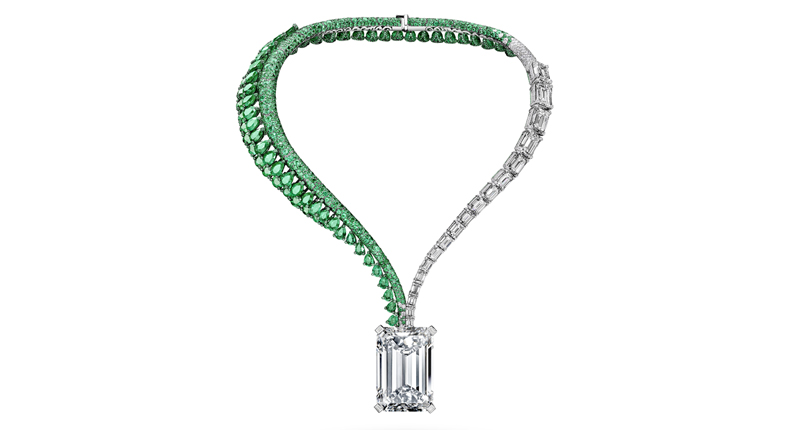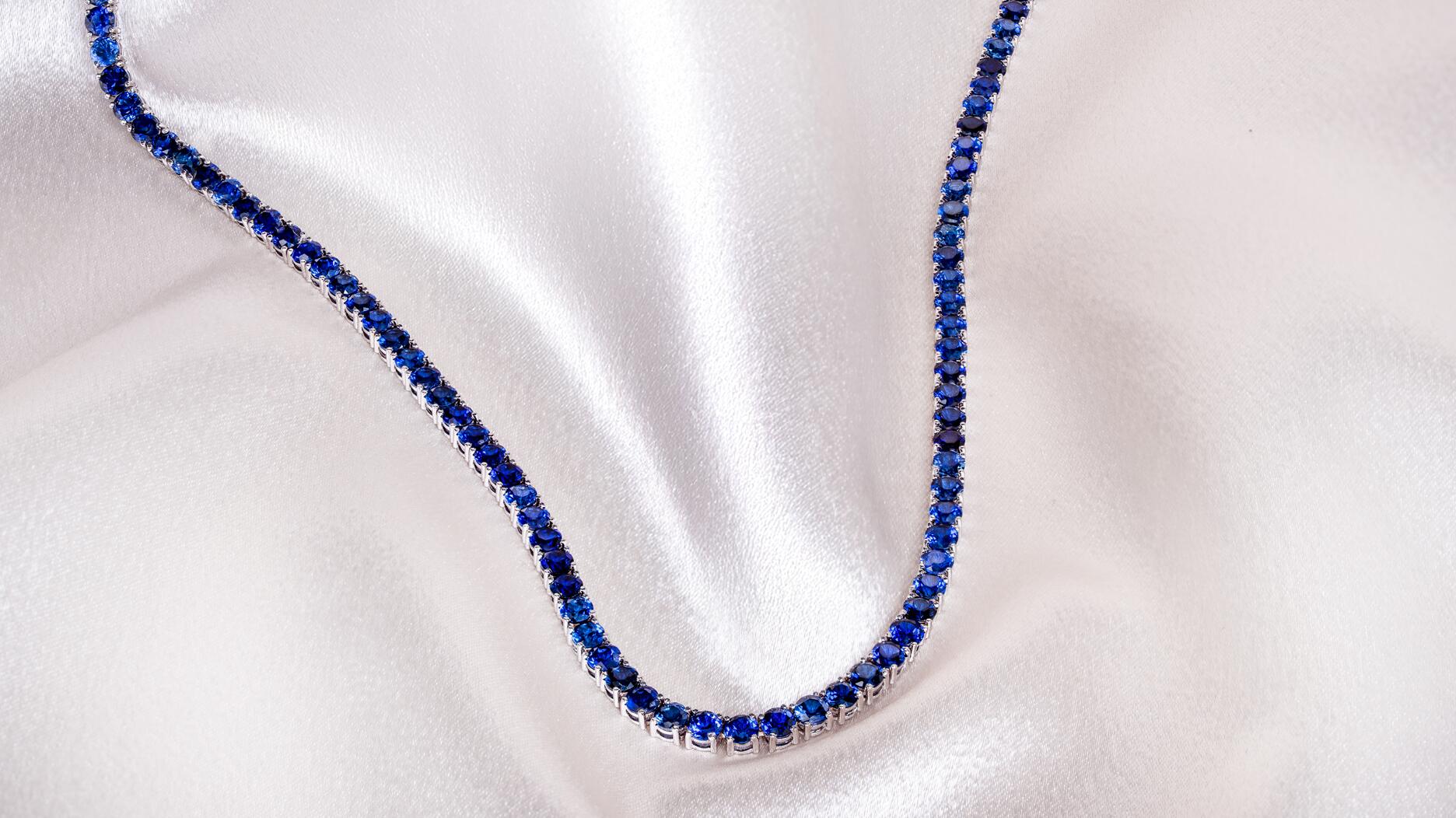Berta de Pablos-Barbier will replace Alexander Lacik at the start of January, two months earlier than expected.
3 Important Stories You Might Have Missed in 2017
These might have not been among the most-read articles of the year, but Editor-in-Chief Michelle Graff thinks they are important nonetheless.

The metrics I get to compile this list, however, go well beyond that number to include many more stories that got thousands of clicks this year, like Zsa Zsa Gabor’s diamond necklace going up for auction, which just missed our most-read list at No. 18, or the arrests of five people wanted for attacks on traveling jewelry salesmen.
But there are a few stories that didn’t make it onto the expanded most-read list at all.
While their exclusion wasn’t surprising to me, I did find it a little disappointing because they are important stories, even if they aren’t as intriguing as crime or celebrity jewelry selling at auction.
1. Yianni Melas’s Hunger Strike
I have to give credit to the people who deserve it here.
First, gem explorer and trader Yianni Melas, who spent his own money and dedicated his own time and energy and put himself in serious discomfort in order to draw attention to the suffering of others.
Secondly, my Senior Editor Brecken Branstrator, who put in a lot of long hours to help bring what Melas was doing to the attention of the trade.
For those not familiar with the backstory, Melas began campaigning online back in the summer for the industry to boycott Swiss jewelry company De Grisogono, claiming that the brand has ties to corrupt but very wealthy leaders in Angola, a poor country where the quality of life is substandard for the majority of citizens.
He stepped up his cries in the fall when news broke that Christie’s Geneva would be auctioning off a necklace created by De Grisogono and set with a 163.41-carat D flawless diamond mined in Angola.
Melas made his way to the Swiss city just as the necklace was set to hit the auction block and went on a hunger strike that Brecken covered for National Jeweler.

The necklace (pictured above) ultimately found a buyer, selling for $33.7 million, but a couple weeks after its sale, Angolan state-owned diamond company Sodiam announced it was pulling its investment in De Grisogono.
Melas wrote on Facebook that seeing the story on Sodiam’s decision moved him to tears just as he was ending his hunger strike.
I don’t know how much, if at all, the company’s decision was influenced by Melas’s action or our article, but I’d like to think that National Jeweler at least played a small part in it.
This next story is in the same vein as the one mentioned above, as it also has to do with responsible sourcing.
In all fairness, there was no way for this story to have made it onto the year’s most popular list, as it was published after the cut-off date for compiling the metrics.
But it is important nonetheless and one that I hope doesn’t get lost in the end-of-the-year shuffle.
The Kimberley Process, the body created to keep “conflict” diamonds out of the trade, held the second of its two annual meetings in mid-December and voted through one major item: the formation of a committee to begin looking at reform next year and deliver its conclusions and any draft decisions at the 2018 plenary.
It is good news that process participants have at least agreed to start looking at reform, but questions linger about their ability to reach an agreement, given that complete consensus is needed from all participants in order to pass any issue.
In other news from the plenary, the KP lost another member of its Civil Society Coalition. Impact announced at the plenary that it was leaving the KP, citing members’ inability to enact any meaningful reform. It is the second NGO to exit the process, following the 2011 departure of Global Witness.
My blog post on the KP plenary went up Dec. 20. I know it’s not an ideal time for retailers to delve into long reads, but it is (in my humble opinion) an issue worth reading about and understanding, and certainly one that’s going to continue into 2018.

3. Online Sales Tax Legislation
From responsible sourcing, we turn next to tax laws. This list just keeps getting more exciting, doesn’t it?
The editors here at National Jeweler know that a big issue for independent brick-and-mortar retailers is online sales tax or, more specifically, the lack of it. Consumers come into the store and take up hours of a jeweler’s time learning about diamond and diamond rings only to turn around and buy online because they save thousands of dollars by not having to pay sales tax.
The first jeweler we interviewed for our 50 Jewelers/50 States series talked about it, and so did a Nebraska jeweler I just interviewed for our latest holiday sales roundup.
While sales tax legislation seems infinitely stalled, there was a bit of movement on this issue in 2017 and it came from South Dakota.
In October, the state’s attorney general, Marty J. Jackley, petitioned the U.S. Supreme Court to reconsider Quill, the 1992 decision that prohibits states from imposing sales tax requirements on vendors with no “physical presence” in the state. It’s a 25-year-old law governing a much-changed retail landscape.
As of this writing, the Supreme Court has not said if it will take up the case, though proponents of online sales tax reform have pointed out that a couple justices have stated publicly that the law is in need of updating.
The court’s current term began in October and oral arguments will continue through April 2018.
The Latest

Sotheby’s held its first two jewelry sales at the Breuer building last week, and they totaled nearly $44 million.

Winners will receive free registration and lodging for its fourth annual event in Detroit.

How Jewelers of America’s 20 Under 40 are leading to ensure a brighter future for the jewelry industry.

Here are six ideas for making more engaging content for Instagram Reels and TikTok, courtesy of Duvall O’Steen and Jen Cullen Williams.


The honorees include a notable jewelry brand, an industry veteran, and an independent retailer.

Carlos Jose Hernandez and Joshua Zuazo were sentenced to life without the possibility of parole in the 2024 murder of Hussein “Sam” Murray.

Roseco’s 704-page catalog showcases new lab-grown diamonds, findings, tools & more—available in print or interactive digital editions.

Yood will serve alongside Eduard Stefanescu, the sustainability manager for C.Hafner, a precious metals refiner in Germany.

The New Orleans jeweler is also hosting pop-up jewelry boutiques in New York City and Dallas.

Set in a Tiffany & Co. necklace, it sold for $4.2 million, the highest price and price per carat paid for a Paraíba tourmaline at auction.

The jeweler’s “Deep Freeze” display showcases its iconic jewelry designs frozen in a vintage icebox.

Take luxury gifting to new heights this holiday season with the jeweler’s showstopping 12-carat sphene ring.

This year's theme is “Unveiling the Depths of the Ocean.”

In its annual report, Pinterest noted an increase in searches for brooches, heirloom jewelry, and ‘80s luxury.

Starting Jan. 1, customers can request the service for opal, peridot, and demantoid garnet.

The 111-year-old retailer celebrated the opening of its new location in Salem, New Hampshire, which is its third store in the state.

The new catalog features its most popular chains as well as new styles.

The filmmaker’s personal F.P. Journe “FFC” prototype was the star of Phillips’ recent record-setting watch auction in New York.

The new location in the Design District pays homage to Miami’s Art Deco heritage and its connection to the ocean.

Inflations, tariffs, and politics—including the government shutdown—were among consumers’ top concerns last month.

“Longtime favorite” presenters, as well as first-time speakers, will lead talks and workshops at the annual event in Tucson next year.

Silas Smith of Meridian Metalworks won the challenge with his pendant that blends Australian and American landscapes.

The sale of the 31.68-carat, sunset-hued stone was part of Sotheby’s first series of events and auctions in Abu Dhabi.

Most customers who walk into your store this month have made up their minds. Your job is to validate their choice, Emmanuel Raheb writes.

The collection features characters and motifs from Ukrainian folklore, including an enchanted mirror and a magic egg.

MatrixGold 3.11, the newest version of the jewelry design program, offers more flexibility, precision, and creative control.


























